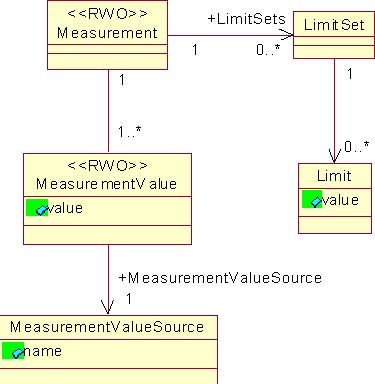
| Previous | Table of Contents | Next |
The classes and properties defined in the IEC 61970-30x (the CIM) can be mapped onto the OPC recommended properties. As the
CIM is highly structured, this will create a complicated mapping. An alternative is to expose CIM as is through the DAIS.
This means that the CIM classes and their properties will appear the same as seen through the DAIS as through the DAF interfaces.
As the DAIS requires a hierarchical structuring of nodes, the CIM equipment hierarchy is selected as the hierarchy exposed
through the DAIS.
Besides the equipment hierarchy the CIM also has a number of other associations. Such associations may be made visible through
the DAIS interface as properties holding ResourceIDs.
The CIM has several associations between RWOs and ways to structure RWOs. The requirement from DAIS on the equipment hierarchy
is that it is strictly hierarchical, else DAIS is transparent to any information model.
For RWOs in the equipment hierarchy its properties simply appear as items at the nodes representing the RWOs. The DAIS supports
navigating across associations as ResourceIDs can be conveyed by SimpleValues.
Utility SCADA/EMS systems have a number of different applications calculating alternate measurement values. In the IEC61970
draft standard this is modeled by Measurements containing one or more MeasurementValues, as
shown in Figure 4-3.

Figure 4-3 Utility SCADA Measurement Modeling
The Measurement and the MeasurementValue appear as Nodes and their properties as Items. In the example from
Section 4.1.2, “Naming,? on page 4-3, th
e Measurement again is represented by the pathname:
Cobden.G1.P
Moving down to MeasurementValue will add its label to the pathname so that it may look like:
Cobden.G1.P.Telem
If the MeasurementValue property for the value has the label Value, finally the pathname for the item will be:
Cobden.16kV.G1.P.Telem.Value In a system also having a State Estimated MeasurementValue, the pathname for state estimated
value might be:
Cobden.16kV.G1.P.SE.Value Finally if the state estimated value is to replace the telemetered, this can be implemented picking
the “best? MeasurementValue from Measurement itself shortcutting the MeasurementValue resulting in the path. Cobden.G1.P.Value
The CIM classes that shall be navigable and whose data is exposed through DAIS are listed in
Table 4-2.
Table 4-2 CIM Classes
| CIM class | Properties and references | ||||
| Measurement | All | ||||
| MeasurementValue | All. MeasurementValues are expected to appear in the hierarchical structure so that all MeasurementValue instances are visible in the browser. | ||||
| MeasurementUnit | All | ||||
| LimitSet | All. The Measurement to LimitSet reference has a cardinality 1..*. It is expected that one LimitSet is the current used and exposed through DAIS. | ||||
| Limit | As the LimitSet to Limit reference has the cardinality 1..* the mapping through DAIS is expected to be a number of properties where each property corresponds to one limit value. | ||||
| ValueAliasSet | As the ValueAliasSet to ValueToAlias reference has cardinality 1..* the mapping through DAIS is expected to be a number of properties where each property corresponds to one translation from numeric to symbolic value. | ||||
| Classes in the hierarchical structure above Measurement | An implementation is free to expose any hierarchical structure of classes above the Measurement. Multiple and different structures are allowed using different views (for views refer to Section 3.2.2, “DAIS Server IDL,? on page 3-30). An implementation is also free to expose any properties from these classes. |
The table is based on the CIM version given by [11].